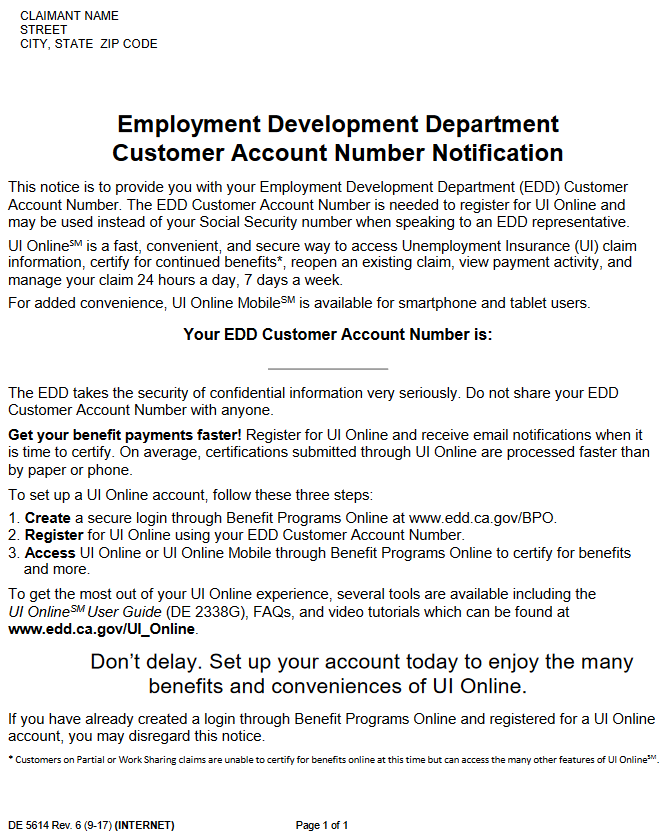Yesterday, a federal judge in the District of Columbia struck down the Trump administration’s second…
Un
Appeals Court Strikes Down Trump Administration’s Asylum Ban

LOS ANGELES — A federal appeals court on Monday struck down President Trump’s policy that barred most migrants from seeking asylum in the United States if they had passed through another country, concluding that the government did “virtually nothing” to make sure that another country is “a safe option” for those fleeing persecution. A three-judge,
LOS ANGELES — A federal appeals court on Monday struck down President Trump’s policy that barred most migrants from seeking asylum in the United States if they had passed through another country, concluding that the government did “virtually nothing” to make sure that another country is “a safe option” for those fleeing persecution.
A three-judge panel of the United States Court of Appeals for the Ninth Circuit in San Francisco affirmed the decision of a federal judge who ruled last year that the so-called third-country transit rule was unlawful, with one judge calling it “perhaps the most significant change to American asylum in a generation.”
The ruling was an interim but important step. In September, the Supreme Court had allowed the Trump administration’s rule forbidding most Central American migrants from seeking asylum in the United States to take effect while the appeals courts deliberated its legality.
That stay remains in place until the Supreme Court takes up the case or the Trump administration abandons the policy. In the meantime, nearly all asylum seekers have been temporarily blocked from entering the country under a separate administration directive, issued as a result of the coronavirus pandemic, that closed the border to all but United States citizens and lawful permanent residents.
Still, Monday’s opinion was an important legal milestone, a 66-page opinion that found serious legal deficiencies in one of the administration’s signature immigration policies.
“The Trump administration is sure to appeal to the U.S. Supreme Court,” said Stephen Yale-Loehr, a professor of immigration at Cornell Law School.
The transit rule was issued jointly by the Departments of Justice and Homeland Security in July 2019, when thousands of migrant families were pushing toward the southwestern border, many of them seeking asylum from violence in Central America. Countering decades of law and policy, under which the United States had long provided refuge in such cases, it declared that any migrant who passed through another country en route to the border would be ineligible for asylum, with few exceptions.
The policy required migrants traveling over land from El Salvador, Honduras or other countries to apply for and be denied asylum by Mexico, Guatemala or another country through which they traveled before they could be eligible to make a claim for protection in the United States.
If they did not, those who managed to reach the United States would be automatically considered to lack a credible fear of persecution in their home countries.
The appeals court said there was evidence that contradicted the administration’s assertion that migrants could obtain safe protection in Mexico and other countries.
It also said the administration had not justified its assumption that a person who failed to apply for asylum in a third country was unlikely to have a meritorious claim.
Judge William A. Fletcher, appointed by former President Bill Clinton, wrote the opinion for the panel, which also included Judge Eric D. Miller, who was appointed by President Trump this year, and Judge Richard R. Clifton, appointed by former President George W. Bush.
Judge Miller concurred in part and dissented in part, writing that the federal agencies’ “deficient” justification for the transit rule was “particularly troubling because the rule represents such a major change to policy — perhaps the most significant change to American asylum in a generation.”
The main opinion said there was “no evidence in the record” to support the rule’s assumption that migrants who do not apply for asylum in Guatemala or Mexico en route from, say, El Salvador or Honduras, can be assumed to lack a credible fear of persecution in their home country.
“This ruling says very simply that Congress is in control of asylum, and the administration cannot act unilaterally to destroy our asylum system,” said Lee Gelernt, the lawyer with the American Civil Liberties Union who argued the appeal on behalf of several groups challenging the rule.
Neither the Justice Department nor the Department of Homeland Security had any immediate comment on the decision.
In a related case this month, a federal judge in the U.S. District Court for the District of Columbia ruled that the administration had illegally put into place the transit rule by not allowing public comment first.
That decision resulted in a suspension of the transit ban on more narrow grounds.
The order that effectively closed the border to asylum seekers, using the coronavirus pandemic as justification, is being challenged in a federal court in Washington.
Supreme Court Limits Failed Asylum Seekers’ Rights to Appeal
Source: Appeals Court Strikes Down Trump Administration’s Asylum Ban
, 
Un
FLAG.DOL.GOV: Essential Resource for PERM Labor Certification Recruitment Compliance
The Foreign Labor Application Gateway (FLAG) at https://flag.dol.gov/ serves as the Department of Labor’s comprehensive digital portal for employers seeking to hire foreign workers through various employment-based immigration programs. For employers navigating the complex PERM Labor Certification process, FLAG has become an indispensable tool that streamlines compliance with recruitment advertising requirements outlined in 20 CFR,
The Foreign Labor Application Gateway (FLAG) at https://flag.dol.gov/ serves as the Department of Labor’s comprehensive digital portal for employers seeking to hire foreign workers through various employment-based immigration programs. For employers navigating the complex PERM Labor Certification process, FLAG has become an indispensable tool that streamlines compliance with recruitment advertising requirements outlined in 20 CFR 656.17.
When conducting PERM recruitment activities, employers must meticulously document their good faith efforts to recruit U.S. workers before hiring foreign talent. FLAG integrates seamlessly with these requirements by providing a centralized platform to submit, track, and manage labor certification applications. The system specifically supports employers in demonstrating compliance with mandatory recruitment steps, including the placement of job orders with State Workforce Agencies, professional journal advertisements, and additional recruitment activities as specified under 20 CFR 656.17(e). By utilizing FLAG, employers can ensure their recruitment efforts align with Department of Labor standards, potentially reducing the risk of audit or denial during the PERM certification process.
PERM Recruitment Requirements and FLAG Integration
FLAG’s role in the PERM process becomes particularly valuable when addressing the specific recruitment documentation requirements of 20 CFR 656.17. The regulation mandates that employers conduct recruitment steps within 180 days of filing, including two Sunday newspaper advertisements, a 30-day job order with the State Workforce Agency, and three additional recruitment activities from a designated list. FLAG not only facilitates the proper filing of these recruitment efforts but also helps employers maintain the required recruitment report detailing lawful job-related reasons for rejecting U.S. applicants.
Recent updates to FLAG have enhanced its functionality for PERM applications, allowing employers to more efficiently upload supporting documentation, track prevailing wage determinations, and monitor case status in real-time. For immigration attorneys and HR professionals managing PERM cases, FLAG’s user interface provides critical visibility into the certification process, helping ensure that all regulatory requirements are met before and during the application period. As labor certification requirements continue to evolve, FLAG remains the authoritative platform for employers seeking to navigate PERM recruitment compliance successfully.
,
Un
THE H1B GUY NEWS (12/3/2021) H1B in Decline and Documented Dreamers in Limbo

The H1B Guy News for the week ending December 3, 2021.
Topics:
H1B in Decline
Documented Dreamers in Limbo
The Number of Immigrant Workers With H1-B Visas Drops the Most in a Decade
https://www.bloomberg.com/news/articl…
Ross, Padilla Lead 49 Colleagues in Urging DHS to Expand DACA Eligibility to Documented Dreamers
https://ross.house.gov/media/press-re…
Read the full post
Subscribe to The H1B Guy Podcast
Join The H1B Guy Channel and Chat on Telegram
Follow The H1B Guy on Twitter
Un
SWA Job Order California: What is an EDD Number?

What is an EDD Number? An EDD Number is technically the state unemployment insurance identification number that the Employment Development Department of California issues a company. Here’s a visual example from the UI Online FAQ: How do I register for an EDD Number? To register for an EDD Number (in California) use this link: https://www.edd.ca.gov/payroll_taxes/e-Services_for_Business.htm,
What is an EDD Number?
An EDD Number is technically the state unemployment insurance identification number that the Employment Development Department of California issues a company.
Here’s a visual example from the UI Online FAQ:
How do I register for an EDD Number?
To register for an EDD Number (in California) use this link: https://www.edd.ca.gov/payroll_taxes/e-Services_for_Business.htm
The EDD Number form will look like this when you receive it. (see below image)
It’s on a form known as DE-5614. Click here for a PDF sample: https://www.edd.ca.gov/pdf_pub_ctr/de5614.pdf
How do I find my company’s EDD Number?
Per the EDD do as follows:
All Unemployment Insurance customers who file a new claim will automatically receive their Employment Development Department (EDD) Customer Account Number (DE 5614) letter within 10 business days of filing.
If you have lost, misplaced, or never received your EDD Customer Account Number, contact the EDD:
Online: Go to Ask EDD and select the category Unemployment Insurance Benefits, the sub category UI Online, and the topic EDD Customer Account Number. Select Continue at the bottom of the page to begin the process of submitting your message.
By Phone: Call 1-800-300-5616 from 8 a.m. to 8 p.m. (Pacific time), seven days a week.
Why do I need an EDD Number for PERM Recruitment?
What else can I use my EDD Number for?
UI Online
Register for UI Online
CalJobs Registration
, 
-

 Un5 years ago
Un5 years agoPERM Process Flow Chart
-

 Enforcement News15 years ago
Enforcement News15 years agoFake ID Makers Arrested In Dallas
-

 BREAKING5 years ago
BREAKING5 years agoPERM Recruitment Advertising, How It Works.
-

 Today's News13 years ago
Today's News13 years agoImmigration: Gangster Tats = Visa Denied
-

 BREAKING5 years ago
BREAKING5 years agoUSCIS Statement Throws Constitution Out the Window
-

 BREAKING3 years ago
BREAKING3 years agoHouse Republicans push asylum restrictions, border security
-

 BREAKING4 years ago
BREAKING4 years agoDeSantis parts with Trump in response to Surfside tragedy
-

 BREAKING3 years ago
BREAKING3 years agoBiden is ignoring immigration issues, voters say in poll





